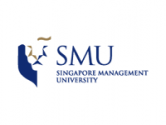Tiger Airways: Incentivising talent through compensation
By Centre for Management PracticeIt was November 2012 and Koay P.Y., CEO of Singapore-based low-cost carrier Tiger Airways Holdings Limited (Tigerair), was putting together a compensation plan to be submitted to the Board's Remuneration Committee (RemCo). This was to be a key solution to resolving a series of events that had adversely impacted the company in recent years, precipitating, what could be called, 'a state of crisis'.
Tiger Airways was established in 2004 as a regional budget carrier serving Southeast Asia, and by 2012 had its largest footprint in Singapore and Australia. On 22 January 2010, the company was listed on the Singapore Stock Exchange.
Public confidence in the company was high, and the IPO shares were oversubscribed. However, by 2012, the company was reporting a net loss of US$80 million compared to a net profit of US$20 million in 2010.
Leading up to Koay's appointment in August 2012, Tigerair had experienced a difficult time since its listing. A string of incidents had negatively impacted the company's brand reputation and financial performance. These included events such as pilot strikes in Singapore, and Tigerair Australia being grounded due to concerns over compliance with safety regulations.
Moreover, several senior executives had left, or were leaving in the wake of the IPO and their positions had not yet been filled.
Employee morale was at a low, with people uncertain where the company was heading or what was going to be done to resolve the company's financial and branding predicament. The company was in urgent need of a turnaround.
The Board had surmised that Tigerair needed a new compensation scheme to attract the necessary people to overcome the crisis in the short-term while positioning the company for long-term sustainability. Tigerair needed a different breed of talent from that of the IPO days. As Koay observed,
The pre-IPO company was, in a sense, a start-up. The company was relatively new, and pushing very hard for an IPO, so there was an endpoint in sight.
Post-IPO was different; there was now no single end point to reach. Instead, there were multiple objectives now, as could be imagined in running any on-going concern. And the objectives of the post-IPO company had to be in alignment with the shareholders' long-term objectives as well.
A new compensation scheme was developed based on discussions between Koay and Ong Chee Mei, Chief Human Resources Officer – one that recognised four broad key elements.
The first element would be an annual guarantee or base. This was the fixed sum, regardless of how the employee performed, that included any basic salary, and any fixed allowances. The second item would be short-term variable compensation with a time horizon of up to a year.
The third item would be long-term variable compensation. There could be many ways to structure long-term variable compensation, including some very complex schemes to assess long-term performance. Element four would consist of employee benefits.
The executives Tigerair wanted to attract to help turn the company's fortunes around would possess certain characteristics. They would have proven experience from other established companies, and have a hands-on and entrepreneurial approach towards solving problems.
They would be fairly bottom-line driven, financially astute, comfortable with grey areas and learning on the fly. In terms of base pay, Tigerair needed it to be high enough compared to market rate to attract these experienced executives.
Short-term variables would be pegged to the successful resolution of the various crisis points as soon as possible. Long-term compensation would be tied to moving Tigerair towards being a profitable and sustainable organisation.

























 Advertise
Advertise








